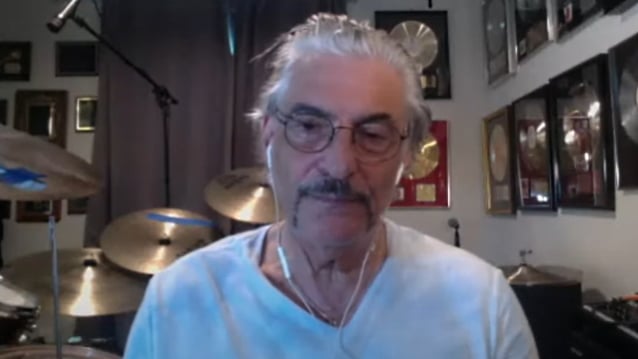Realities of doing science in remote rainforests: The Karaawaimin Taawa Biodiversity Assessment
Written by on January 25, 2023
When ecological research makes its way onto a peer-reviewed page – in the form, perhaps, of a species list or population estimate – it can be easy to forget or ignore the complex chain of things that had to happen to get it there. In the case of the recently-completed Karaawaimin Taawa Biodiversity Assessment, which sought to inventory species in a remote mountain range in South Rupununi, Guyana, that story of ‘getting it done’ was particularly elaborate.
The research was carried out by the South Rupununi District Council (SRDC) – an Indigenous organization in South Rupununi that legally represents 21 Indigenous communities – and international initiative the Sustainable Wildlife Management Programme (SWM), with collaboration from a wide range of local and international experts. The work was motivated by local Indigenous communities’ concern about environmental damage, including water contamination, from gold mining in Karaawaimin Taawa – which is customary land of the Wapichan Indigenous people, but is not currently legally recognized as such. It’s one of several Indigenous-led initiatives that are working towards securing land rights to the wider Wapichan territory.
“A lot of Indigenous folks from the communities that we represent, and other communities out of our jurisdiction, depend on the area as a source of livelihoods, and large-scale mining activities contribute negatively towards the environment there,” said Timothy Williams, Project Coordinator of SRDC. “So what we’re trying to do is…gain some kind of control over [what activities take place there], to be able to balance economic income generation and livelihoods with environmental protection,” he said.
As such, SRDC deemed a biodiversity assessment combining Indigenous knowledge and Western science – the first of its kind in the area – an important step. Such a study could serve to communicate the importance of the ecosystem, and potentially help the Wapichan gain tenure rights to be able to monitor and manage the impact of activities like mining.

A selection of the team members involved in the pre-biodiversity assessment of the Karaawaimin Taawa. Many of these team members were local experts in the actual assessment alongside international scientists. ©FAO/Marlondag
“I think without numbers, it’s hard to convince people,” said Nathalie van Vliet, an associate researcher at the Center for International Forestry Research and World Agroforestry (CIFOR-ICRAF) and site coordinator for the SWM Programme Guyana. “If you can say things like ‘many new species were found’, or ‘that area is particularly important for these vulnerable species’, it’s easier to convince people that it needs protection, and there will be more international support for the conservation of that area.”
But to get those numbers, the team had to get the right people together – and get them to the remote area to do the work that was needed. “We took about two years to plan this activity,” said Williams. “During that time, my role was to engage other partners and researchers, mainly from the US, to help plan the proposal, the methods, budgeting and so forth, and give them a better idea of the area. I also had to get our local researchers acquainted with the concept, and bring them in as part of the planning process.” The organizers decided to structure the expedition in several teams, who would focus on various taxonomic groups: beetles, bats, reptiles, amphibians, birds, mammals, and fish. Each team consisted of community experts, or ‘monitors’ – such as fishers in the fish group, and birdwatching guides in the bird group – alongside Western science-trained specialists in these areas.


In January 2022, a team of trail openers and carpenters carried out a three-week-long ‘pre-mission’ – contending with rain, mud, heavy loads, snake bites, and long journeys – to cut trails and build bridges for the expedition team to traverse, and build four camps in a range of locations to cover the various altitudes and ecosystems within the area. They also set camera traps, which operated for about four months, and were later analysed as part of the assessment.


Finally, in March 2022, the research party – ten local monitors, nine scientists, nine ‘load men’, four cooks, four helpers, and a photographer – set out. First, they rode across the savanna by motorbike to what locals call the ‘bush mouth’: the border between the savanna and the forest. They then made their way by bike, via a track the set-up crew had made, through the forest to a creek, where they left the bikes and walked for four hours to get to the main camp.
“It’s not that steep, but you pass many creeks and many marshy areas,” said Gavin Winter, an SRDC monitor who headed the field team. “The main camp is at the edge of a river, so to go any further, you have to follow the river to a bridge. Then you start going up, and it gets steeper, and you also have some bamboo forests, which are quite special. I saw a lot of wildlife. I have been to places much [more remote] than [Karaawaimin Taawa]; I have been in several forests… [but] I have never seen that many animals and birds.”

Wildlife was found in abundance in Karaawaimin Taawa. See here a Red-faced spider monkey looking down at the biodiversity team as they pass below. ©FAO/Marlondag
The research teams camped in the forest for three weeks while they carried out the assessment, staying for three or four days in each location and then hiking to the next one. “During the trip, community members fished and hunted with their bows and arrows,” said Gavin: “it’s their hunting area and fishing grounds, so they decided on the food that was going to be eaten during the trip.”

Gavin Winter holds his bow and arrow, a key piece of equipment for the community members to hunt for food during the assessment. ©FAO/Marlondag
While the SRDC is still waiting on the publication of the final assessment, the whole process was also very important. “It is not just about the results” said van Vliet, “it is also about the effort that was put into realizing such a study and the learning process that came with it.” According to van Vliet, this assessment was a perfect space for co-learning between local experts and scientists. For Williams, a key outcome was that “capacities were built – now, I’m confident that we can, on our own, execute other assessments across the territory. So that is something very positive that came out of this assessment.”
“What the community really wants to show is that they have the capacity to understand, to study, and to take care of that area,” said van Vliet. “They have been able to conserve this area over decades, and now they also have the biological expertise and the logistical know-how to study and monitor this area at a comparable level – or better – than what the government may be able to do.”
This story is the second in a three-part series. Read the Q+A with local bird expert Asaph Wilson and stay tuned for the third story, which speaks to the assessment’s scientific results.
The SWM Programme in Guyana is part of a major international organisation of African, Caribbean and Pacific states, funded by the European Union, with co-funding from the French Facility for Global Environment and the French Development Agency. Its aim is to improve food security and the conservation and sustainable use of wildlife in forest, savannah, and wetland environments in 15 countries.
(Visited 1 times, 1 visits today)
We want you to share Forests News content, which is licensed under Creative Commons Attribution-NonCommercial-ShareAlike 4.0 International (CC BY-NC-SA 4.0). This means you are free to redistribute our material for non-commercial purposes. All we ask is that you give Forests News appropriate credit and link to the original Forests News content, indicate if changes were made, and distribute your contributions under the same Creative Commons license. You must notify Forests News if you repost, reprint or reuse our materials by contacting forestsnews@cgiar.org.
watch avatar the way of water full movie
watch avatar the way of water full movie
watch avatar the way of water full movie






